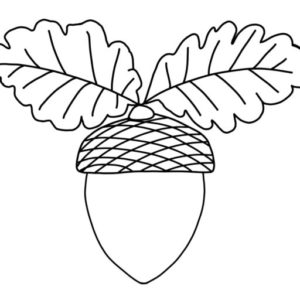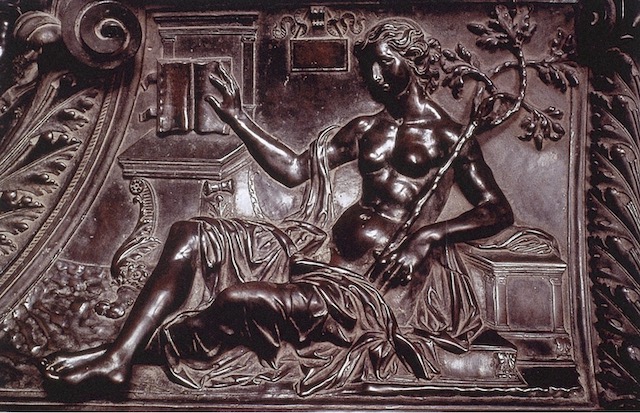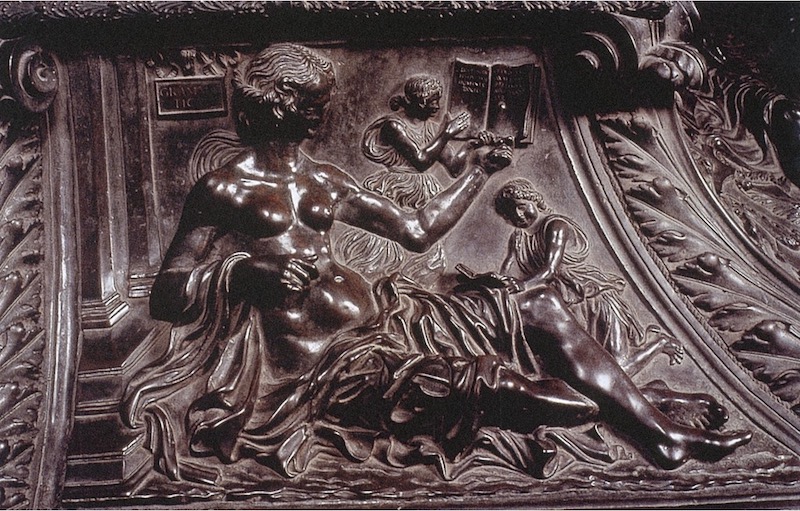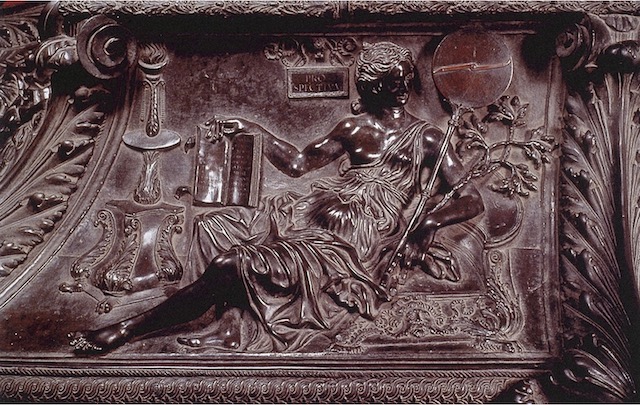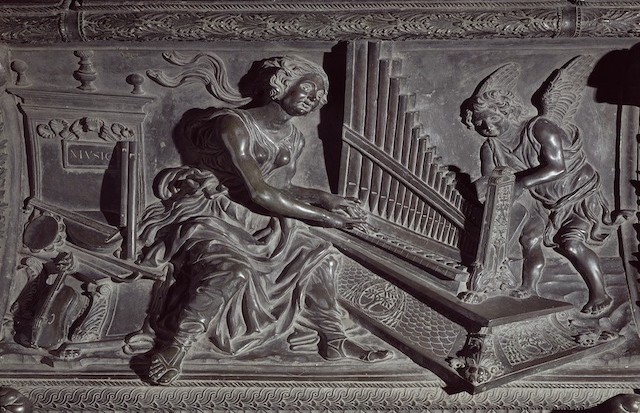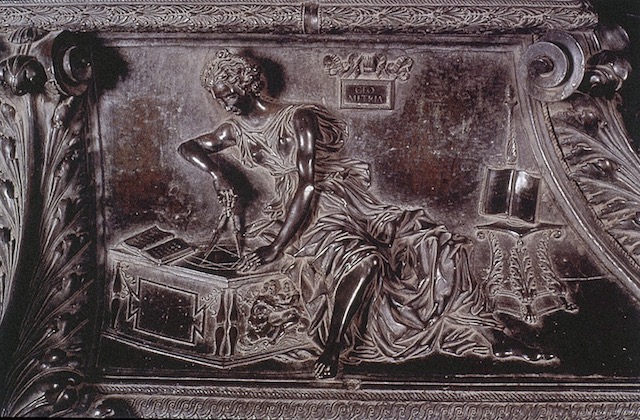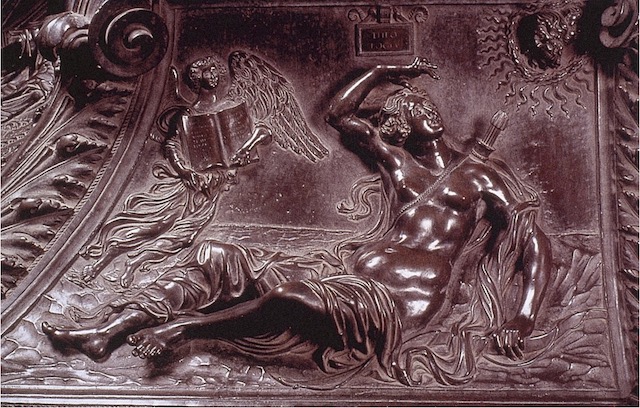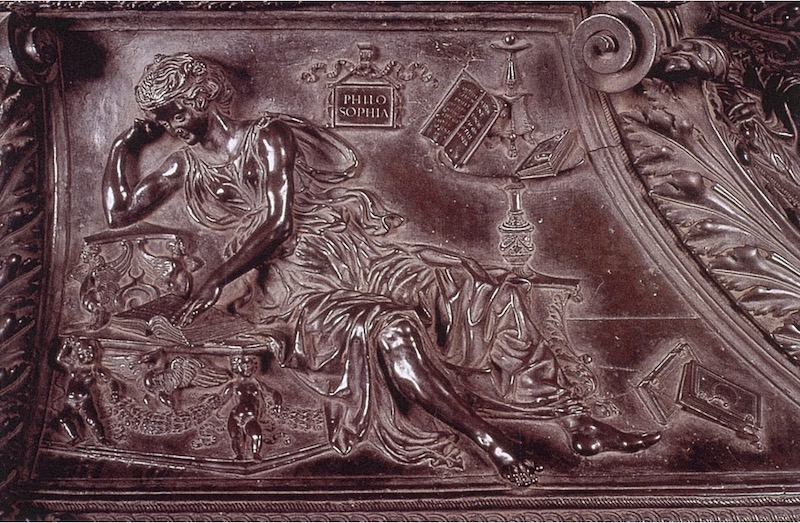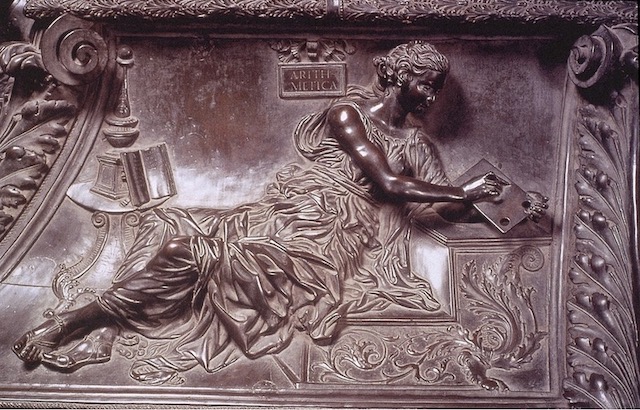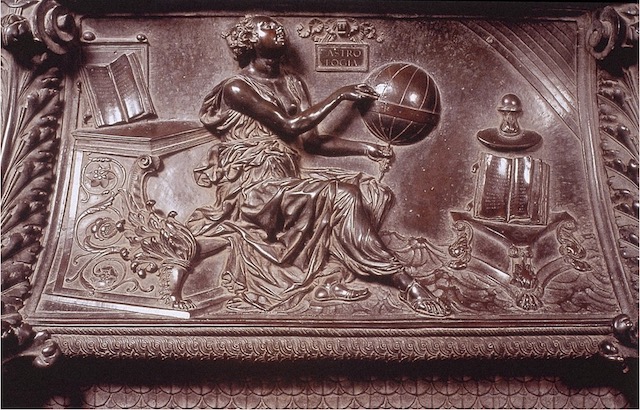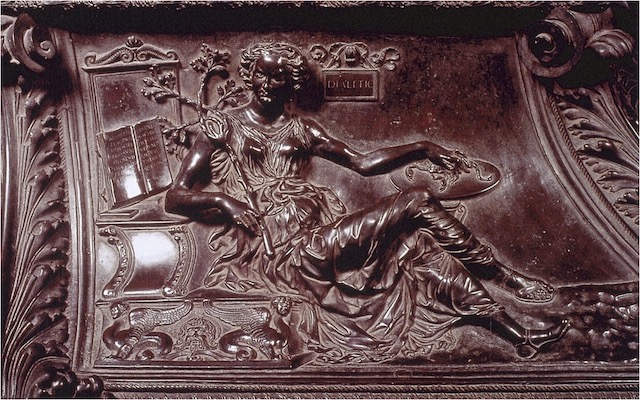Layout and Interaction throughout the Tomb
As previously discussed, certain figures of the Liberal Arts are paired on Sixtus’s tomb, either through location or pose. For example, the pairs of Grammar and Rhetoric (see below for each panel) mirror each other across the acanthus barrier where they are represented at the foot of the tomb. Using the classical examples to design his figures, it is evident that Pollaiuolo incorporated the antique and adapted certain aspects into his figures. Examined by Ettlinger in relating Grammar and Rhetoric to the Tellus Coin, and by Wright arguing that the Bed of Polyclitus relief was used to arrange the lounging and reclining female body.[126] Further, Laurie Fusco examines Pollaiuolo’s use of the antique, and how his figures are often mirror or reflected versions of one main pose.[127] In many panels, a contrapposto is created, where the feet and legs turned in an opposite direction of the upper body, most often with the feet projecting outside of the panel. Although some Arts twist left or right, the upper body or head is facing a different direction than their legs. Thus, it is evident that Pollaiuolo’s style can be identified within the figures across the tomb, and that through their similar pose or subject matter depicted, interaction between disciplines can be determined. Additionally, as Pollaiuolo was a printmaker in addition to being a goldsmith, he would have been familiar with working in reverse to create an image. In this aspect, Pollaiuolo’s expertise in various media is reflected in the reflection of each figure and how they often correspond with another discipline but in reverse.
As established, Grammar and Rhetoric are paired together through their location at the foot of the tomb, as are Theology and Philosophy through their positioning at the head. Further, Theology and Prospectiva are paired through the divine light emanating from the head of the Trinity with Theology’s panel. Paired both in subject matter and in position, both being the discipline on the top on either side, Geometry and Arithmetic are complementary. Their poses mirror each other and both dealing with mathematics, they can be closely connected. In a similar sense, Prospectiva and Astrology can be connected through subject matter, notably the astrolabe that Prospectiva holds. In addition, the astrolabe can be used to determine the position of the stars, thus relating to the figure of Astrology. Wright argued that both Prospectiva and Astrology understood the cosmos to be created by God and this can be seen in their association to Sixtus. Wright writes that the astrolabe is pointed in the direction indicating the sign of Cancer and from his epitaph, his date of birth is confirmed to be a Cancer.[128] Although there are many pairs throughout the disciplines of the Liberal Arts, further connections are established along each side.
The figures at the center of each side panel clearly have significance as they interact more with the surrounding figures. The center panel of Music is looked at by both Prospectiva and Geometry. As Music was also related with harmony, she can therefore be understood to serve as the harmony, and concord between all the disciplines, hence her positioning in the center. Further, because Harmony was created through music, the concord of the universe is analogous to the discipline of Music.[129] While the figures on the left half of the tomb are less integrated, both in pose and in the overall disciplines. Instead, they connect across the tomb, to the disciplines on the right side: Arithmetic with Geometry, and Astrology with Prospectiva. Astrology is further connected with Music as they both are seated at the center of their panel, looking up instead of left or right to their surrounding disciplines.
